Empowering Stroke Recovery: 7 Essential Equipment for Rehabilitation
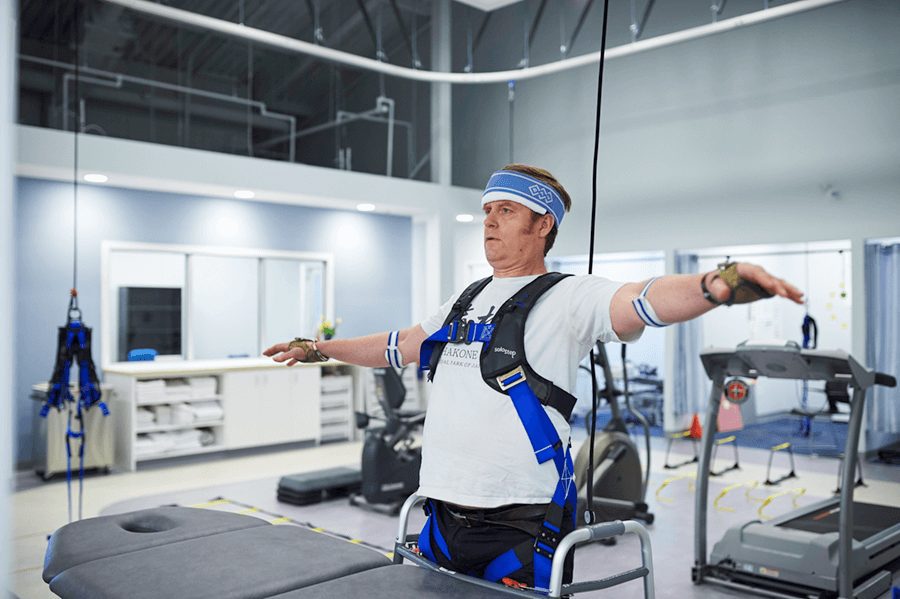
Stroke rehabilitation can be significantly improved with the right equipment to aid patients on their journey to recovery. Modern stroke rehab facilities are equipped with advanced tools that maximize results, ranging from innovative robotics to cutting-edge technology. In this blog, we will explore eight must-have pieces of stroke rehab equipment that are transforming how patients regain their independence and mobility.
1. Robotic Exoskeletons: Enhancing Mobility
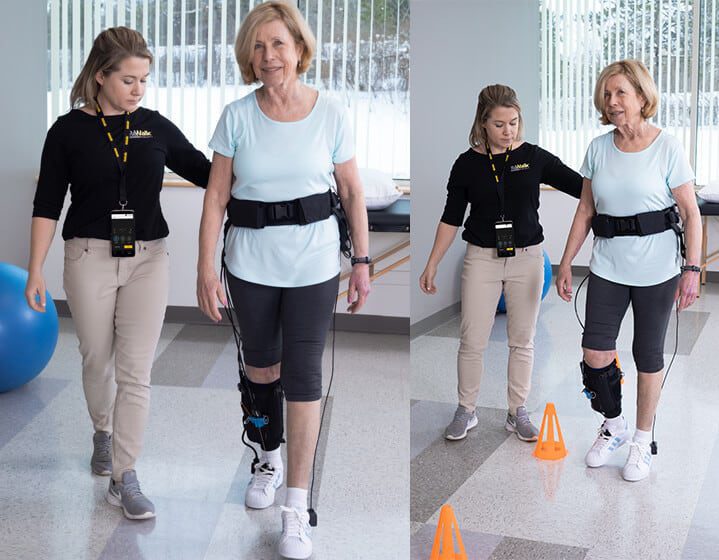
Stroke rehab facilities now employ robotic exoskeletons, like the ReWalk ReStore Soft Exo-Suit. These are wearable devices that offer targeted support to specific body parts, helping with repetitive movements and muscle retraining. These devices have revolutionized how patients learn to walk and move again, accelerating their progress towards recovery. Some benefits of robotic exoskeletons include:
- Improved mobility
- Muscle reeducation and strength development
- Gait and balance improvement
- Reduced physical strain on therapists
- Psychological benefits
2. Virtual Reality (VR) Systems: Immersive Therapy
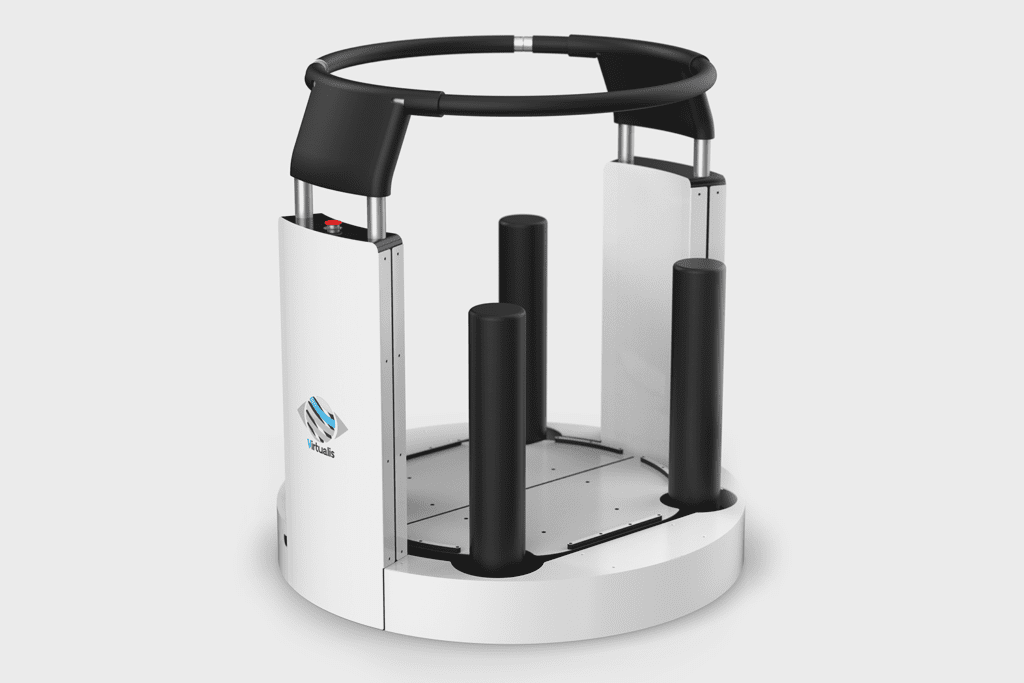
Virtual reality (VR) systems like Virtualis VR offer engaging experiences that motivate patients during their rehab journey. Through simulated real-life scenarios, VR-based rehab programs enable patients to practice daily activities in a virtual environment. This immersive therapy contributes to better outcomes and helps patients regain their functional abilities. Five benefits of using VR during rehab include:
- Engaging and motivating therapy
- Real-life simulations
- Neuroplasticity and brain reorganization
- Customized and challenging exercises
- Quantitative progress tracking
3. Functional Electrical Stimulation (FES): Activating Recovery
Functional Electrical Stimulation (FES) involves using electrical currents to activate weakened muscles, leading to muscle contractions and improved blood flow. FES plays a vital role in muscle re-education and strength development, supporting patients in their journey towards recovery. Some benefits include:
- Pain management
- Reduction of spasticity and muscle tightness
- Improved circulation and muscle endurance
- Enhanced functional abilities
- Muscle reeducation and strength building
4. Hydrotherapy Equipment
Hydrotherapy equipment, such as aquatic therapy pools with variable speed jets and adjustable floors, utilizes water’s buoyancy and resistance to aid patients during exercises. This form of therapy reduces joint impact and supports a safe and progressive recovery. Hydrotherapy equipment offer many different benefits, including:
- Reduced joint impact and weight-bearing support
- Increased range of motion and muscle relaxation
- Improved balance and gait training
- Enhanced circulation and cardiovascular fitness
- Psychological benefits and increased confidence
5. Assistive Devices for Activities of Daily Living (ADL): Regaining Independence
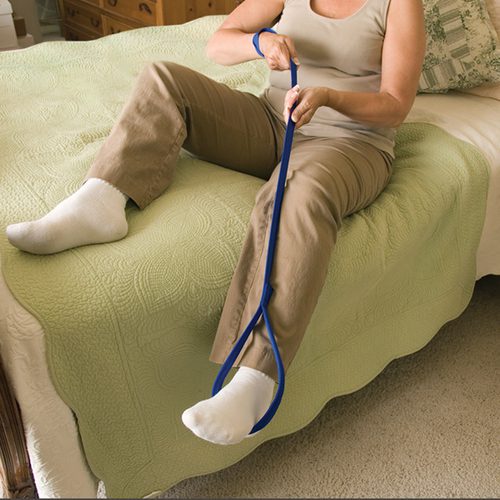
Assistive devices, like adaptive eating utensils and dressing aids, help stroke survivors regain independence in daily activities. These tools not only enhance functional abilities but also boost confidence and self-sufficiency. Some benefits include:
- Enhanced independence
- Improved functional abilities
- Reduced physical strain on caregivers
- Faster and safer rehabilitation
6. Mirror Therapy Setup: Creating the Illusion of Movement

Mirror therapy is a simple yet effective technique that stimulates motor recovery by tricking the brain into perceiving movement in the affected limb. Stroke rehab facilities use mirror therapy setups to facilitate neural pathways’ activation and improve motor function. Mirror therapy:
- Improves motor function and coordination
- Enhances muscle strength and range of motion
- Reduces pain
- Increases neuroplasticity
- Is cost-effective and non-invasive
7. Overhead Track Systems: Supporting Mobility Training
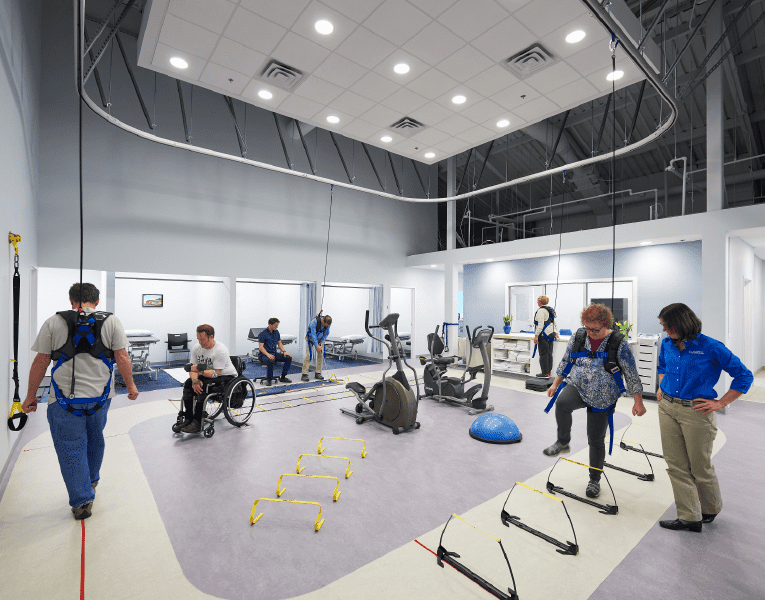
Overhead track systems like the Solo-Step are another essential addition to stroke rehab facilities. These systems use ceiling-mounted tracks and harnesses to support patients during mobility training and exercises. They provide a safe environment for patients to practice walking and weight-bearing activities while reducing the risk of falls. The Solo-Step Overhead Track and Harness System:
- Increases patient confidence
- Protects patients from falls during rehabilitation
- Decreases risk of patient & therapist injury
- Allows patients to challenge themselves with advanced therapies
- Helps patients improve gait, strength, and coordination
Stroke rehab equipment plays a pivotal role in empowering patients on their road to recovery. From robotic exoskeletons to virtual reality systems and functional electrical stimulation, each tool contributes to the remarkable progress of stroke survivors. With the aid of smart rehabilitation platforms, hydrotherapy equipment, assistive devices, and overhead track systems, rehab facilities are making a significant impact on patients’ lives. Embracing the power of stroke rehab equipment is key to achieving better outcomes and supporting patients in their journey to reclaim their independence and mobility.
For more blogs, click the button below!